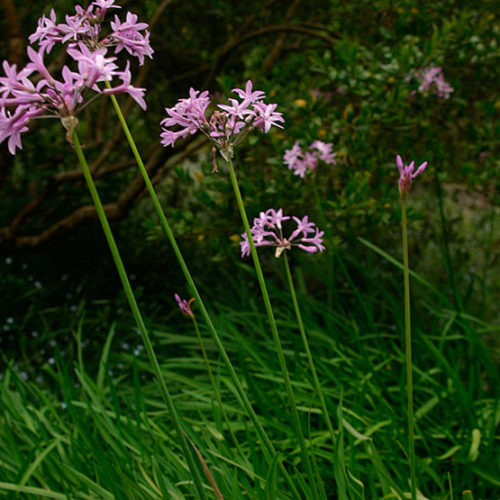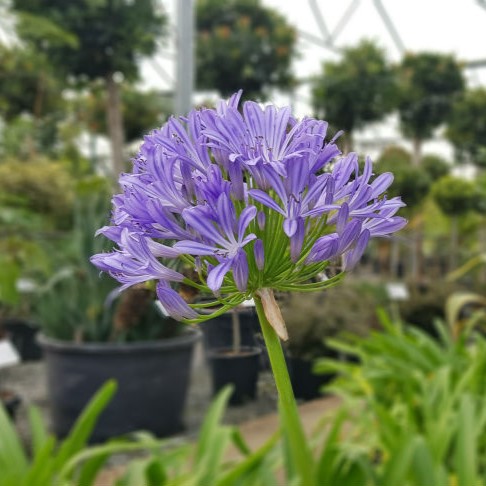Grasping the Art of Agapanthus Treatment: Important Actions for Healthy Development and Dynamic Blooms
In the realm of cultivation, the cultivation of agapanthus stands as a rewarding endeavor for those that look for to support these classy flowering plants. With their striking blossoms and elegant foliage, agapanthus has captured the attention of gardeners worldwide. Nonetheless, achieving ideal development and vivid blossoms needs a nuanced approach that includes numerous essential actions. From picking the ideal variety to mastering trimming strategies, the journey in the direction of growing thriving agapanthus plants is multifaceted and holds the vital to unlocking the full potential of these botanical gems.

Selecting the Right Agapanthus Selection

When choosing the ideal Agapanthus selection for your garden, consider aspects such as climate viability, bloom color, and growth habit. Agapanthus, typically understood as Lily of the Nile or African lily, can be found in a range of shades varying from shades of purple and blue to white. Select a flower color that matches your existing yard palette to produce an unified landscape. In addition, take into consideration the climate in your area to make sure the Agapanthus selection you choose can flourish in your certain problems. Some ranges are more forgiving of chilly temperature levels, while others favor warmer environments. Understanding the growth behavior of various Agapanthus ranges is critical for appropriate positioning within your yard. Some selections have a clumping growth routine, perfect for boundaries or containers, while others have a more dispersing nature, ideal for ground cover or mass growings. By meticulously evaluating these variables, you can pick the ideal Agapanthus range to enhance the appeal of your garden.
Suitable Planting Problems
Taking into consideration the ideal ecological requirements is crucial for effective Agapanthus cultivation. Agapanthus thrives in well-draining soil with a slightly acidic to neutral pH level. When growing, pick a place that receives full sunshine to partial color. In hotter climates, giving some afternoon shade can avoid scorching of the fallen leaves. Agapanthus plants are delicate to cold temperature levels and should be safeguarded from frost throughout winter season.
To guarantee healthy and balanced development and dynamic flowers, plant Agapanthus bulbs at a depth of regarding 2-4 inches and space them 8-12 inches apart. Mulching around the base of the plants aids maintain dampness and reduces weed growth.
Watering and Feeding Tips
Keeping correct wetness levels and supplying necessary nutrients are crucial elements in the care routine for Agapanthus plants. It is vital to strike an equilibrium when it comes to sprinkling Agapanthus. If overwatered, these plants like regularly moist soil but are susceptible to root rot. During the growing period, water deeply when a week, making sure the soil is well-draining to avoid waterlogging. In hotter climates or throughout durations of drought, even more constant watering Resources may be needed to maintain the dirt evenly damp. Nevertheless, lower watering in the winter months to stop waterlogged conditions.
Feeding Agapanthus is vital for promoting healthy growth and prolific blossoms. Apply a balanced plant food, such as a 10-10-10 formula, in the very early springtime as brand-new development arises. By adhering to these watering and feeding suggestions, you can guarantee your Agapanthus plants thrive and generate lively, lasting blooms.
Trimming Techniques for Agapanthus
Pruning Agapanthus plants at the appropriate times and with correct strategies is essential for maintaining their health and wellness and promoting ideal growth and blooming. The ideal time to trim Agapanthus is in late winter or early springtime before brand-new growth emerges. Begin by eliminating any yellowing or dead leaves near the base of the plant. Cut them as close to the ground as feasible without damaging the emerging shoots.
For flowered stems, wait until the blossoms have actually perished and after that cut them back to the base. This not just cleans up the plant's look however likewise encourages the advancement of brand-new flower buds. Deadheading spent flowers can additionally reroute the plant's energy right into creating even more blooms rather than establishing seeds. However, if you wish to collect seeds for useful content propagation, leave some blossoms to dry and mature on the plant.
Bear in mind to utilize clean, sharp devices to make precise cuts and decrease the danger of presenting diseases. Agapanthus. Regular pruning will certainly aid keep your Agapanthus looking healthy and balanced and cool while making sure a bountiful display of attractive blooms
Handling Common Bugs and Illness
After making certain proper pruning methods for Agapanthus, it is crucial to attend to typical insects and conditions that can impact the wellness and vigor of these plants. One common parasite that affects Agapanthus is the Agapanthus gall midget.
Another common problem is fungal leaf area, which presents as dark lesions on the fallen leaves. To stop fungal diseases, guarantee great air flow around the plants, avoid above watering, and remove any kind of infected leaves immediately. Furthermore, Agapanthus plants can endure from origin rot if they are grown in improperly draining soil. To avoid this, plant Agapanthus in well-draining soil and prevent overwatering. By being vigilant and taking punctual activity against diseases and bugs, you can aid your Agapanthus plants grow and create dynamic blooms.

Final Thought
Finally, understanding the art of agapanthus treatment involves picking the right range, giving ideal growing conditions, correct watering and fertilizing, suitable trimming techniques, and addressing common insects and illness. By complying with these crucial steps, you can guarantee healthy growth and vibrant flowers for your agapanthus plants. Remember to frequently monitor and keep your plants to promote their total health and longevity.
To make sure healthy growth and vivid blooms, plant Agapanthus bulbs at a depth of concerning 2-4 inches and room them 8-12 inches apart. By adhering to these watering and feeding tips, you can guarantee your Agapanthus plants thrive and generate lively, lasting blossoms.
One common insect that impacts Agapanthus is the Agapanthus gall midge. In addition, Agapanthus plants can suffer from root rot if they are grown in poorly draining wikipedia reference dirt. By adhering to these important steps, you can make certain healthy and balanced development and lively flowers for your agapanthus plants.